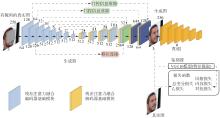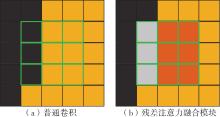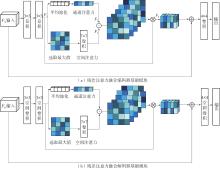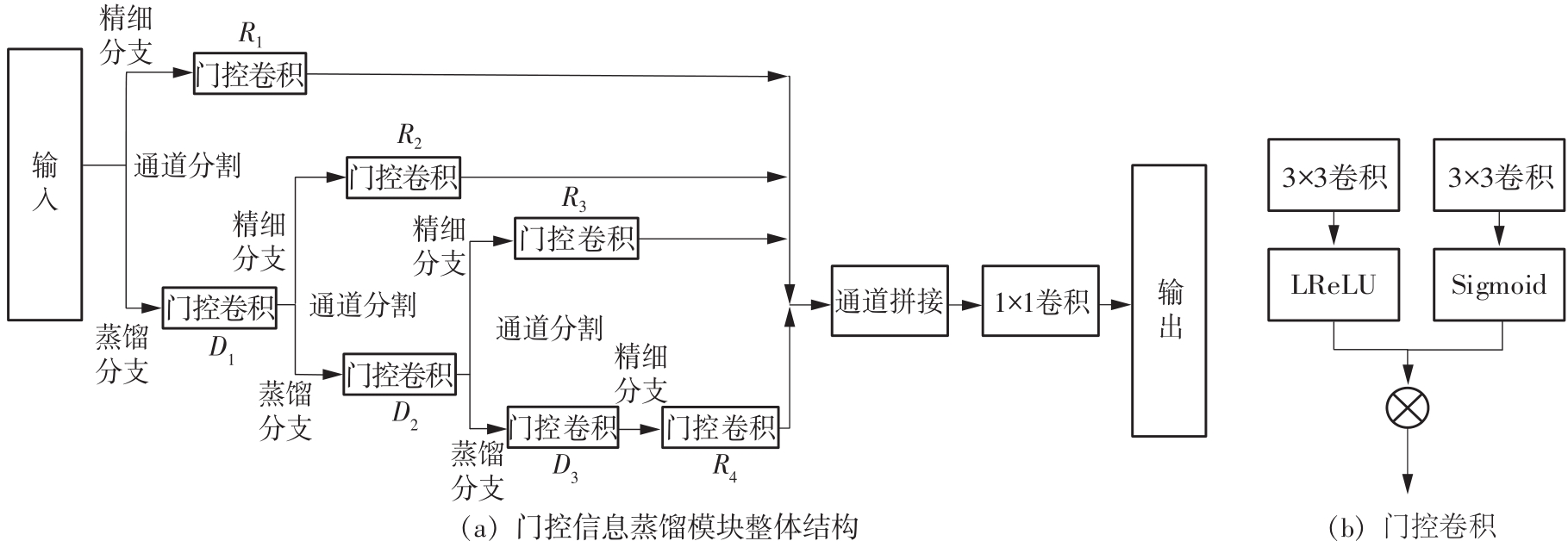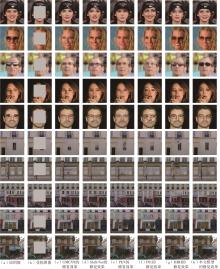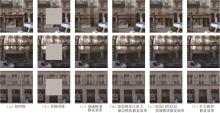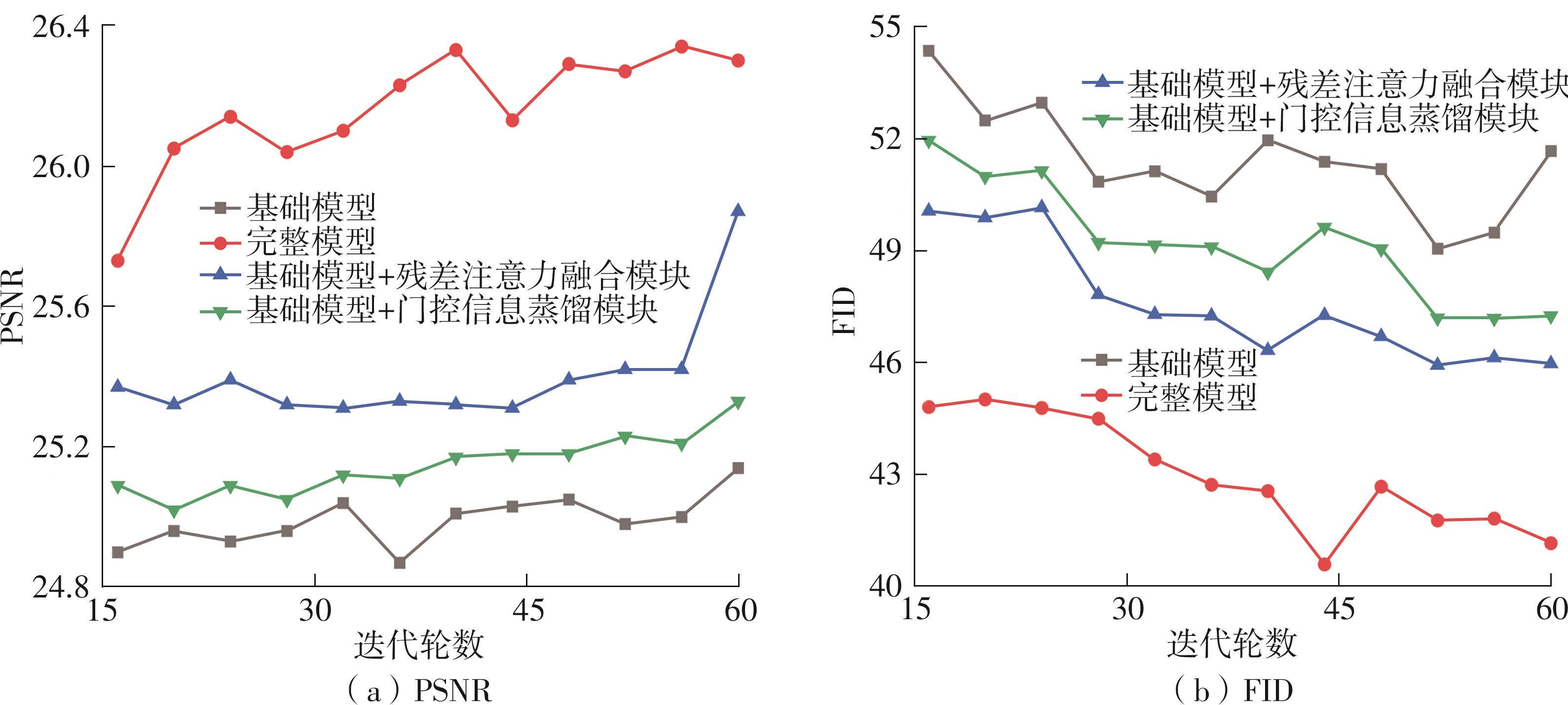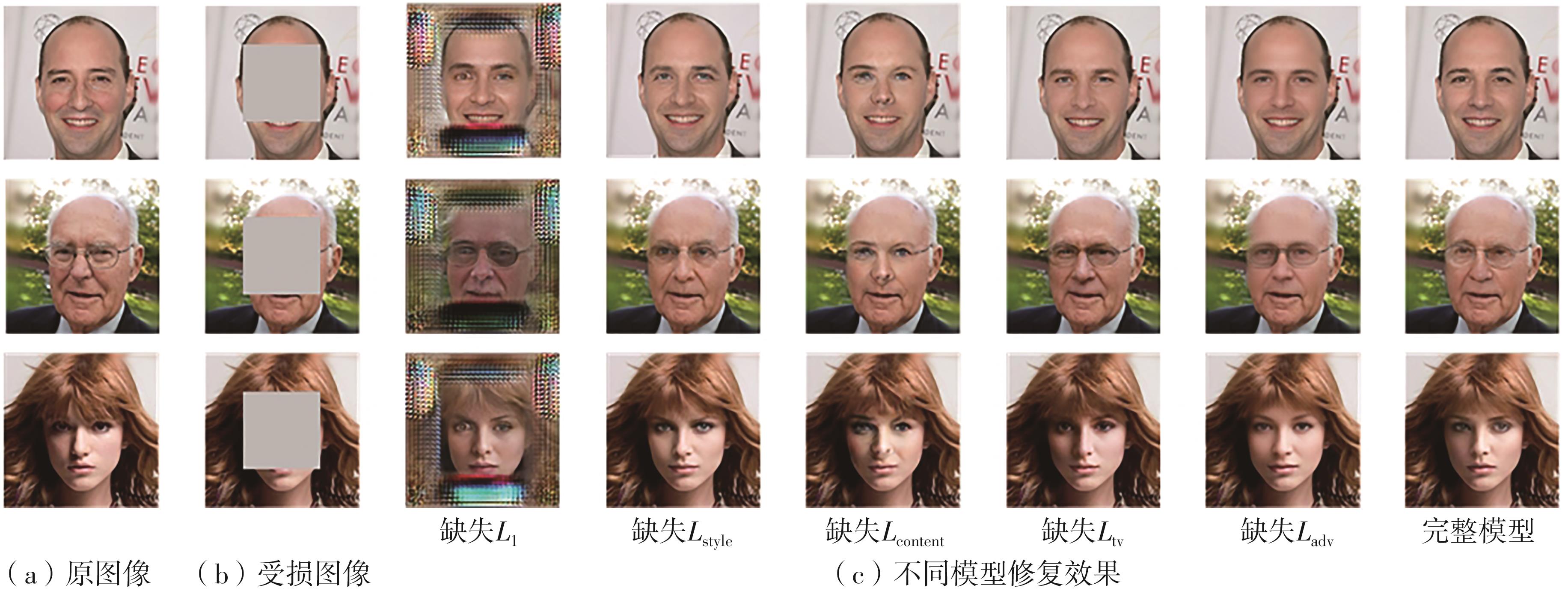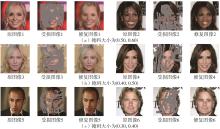Journal of South China University of Technology(Natural Science Edition) ›› 2022, Vol. 50 ›› Issue (12): 49-59.doi: 10.12141/j.issn.1000-565X.220025
Special Issue: 2022年计算机科学与技术
• Computer Science & Technology • Previous Articles Next Articles
Image Inpainting via Residual Attention Fusion and Gated Information Distillation
YU Ying HE Penghao XU Chaoyue
- School of Information Science and Engineering,Yunnan University,Kunming 650091,Yunnan,China
-
Received:2022-01-13Online:2022-12-25Published:2022-08-05 -
Contact:余映(1977-),男,博士,副教授,主要从事图像与视觉、人工神经网络研究。 E-mail:yuying.mail@163.com -
About author:余映(1977-),男,博士,副教授,主要从事图像与视觉、人工神经网络研究。 -
Supported by:the National Natural Science Foundation of China(62166048);the Applied Basic Research Project of Yunnan Province(2018FB102)
CLC Number:
Cite this article
YU Ying, HE Penghao, XU Chaoyue . Image Inpainting via Residual Attention Fusion and Gated Information Distillation[J]. Journal of South China University of Technology(Natural Science Edition), 2022, 50(12): 49-59.
share this article
Table 2
Quantitative analysis results of six models on two test sets"
| 模型 | CelebA-HQ数据集上 | Pairs数据集上 | |||||||||
|---|---|---|---|---|---|---|---|---|---|---|---|
| SSIM | PSNR | L1损失 | L2损失 | FID | SSIM | PSNR | L1损失 | L2损失 | FID | ||
| GMCNN | 0.892 2 | 26.19 | 0.017 8 | 0.002 9 | 7.664 9 | 0.839 3 | 24.34 | 0.026 7 | 0.005 1 | 47.603 8 | |
| Shift-Net | 0.892 8 | 26.50 | 0.019 0 | 0.002 7 | 7.677 6 | 0.847 9 | 25.14 | 0.024 1 | 0.004 3 | 51.677 9 | |
| PEN | 0.870 3 | 25.35 | 0.023 6 | 0.003 4 | 14.141 5 | 0.828 0 | 23.82 | 0.025 3 | 0.005 8 | 63.825 9 | |
| PIC | 0.867 9 | 24.45 | 0.022 8 | 0.004 1 | 7.664 9 | 0.826 6 | 23.63 | 0.029 3 | 0.006 3 | 47.586 8 | |
| HIIH | 0.873 4 | 26.32 | 0.020 7 | 0.002 6 | 18.634 8 | 0.831 2 | 23.81 | 0.028 6 | 0.005 7 | 50.921 5 | |
| 本文模型 | 0.902 8 | 27.11 | 0.018 9 | 0.002 4 | 7.433 1 | 0.873 3 | 26.30 | 0.019 7 | 0.003 3 | 41.148 3 | |
Table 3
Quantitative comparison of loss function ablation experiments on CelebA-HQ"
| 消融模型 | SSIM | PSNR | L1 | L2 | FID |
|---|---|---|---|---|---|
| 去除L1 | 0.260 3 | 10.12 | 0.222 0 | 0.098 6 | 414.975 3 |
| 去除Lstyle | 0.892 6 | 26.68 | 0.019 0 | 0.002 6 | 7.416 7 |
| 去除Lcontent | 0.886 7 | 25.68 | 0.020 0 | 0.003 1 | 11.604 9 |
| 去除Ltv | 0.895 5 | 26.46 | 0.019 0 | 0.002 7 | 7.320 6 |
| 去除Ladv | 0.896 5 | 27.01 | 0.018 0 | 0.002 4 | 10.928 1 |
| 完整模型 | 0.902 8 | 27.11 | 0.018 0 | 0.002 4 | 7.664 9 |
| 1 | BERTALMIO M, SAPIRO G, CASELLES V,et al .Image inpainting[C]∥ Proceedings of the 27th Annual Conference on Computer Graphics and Interactive Techniques.New York:ACM,2000:417-424. |
| 2 | BARNES C, SHECHTMAN E, FINKELSTEIN A,et al .PatchMatch:a randomized correspondence algorithm for structural image editing[J].ACM Transactions on Gra-phics,2009,28(3):24/1-11. |
| 3 | RONNEBERGER O, FISCHER P, BROX T .U-Net:convolutional networks for biomedical image segmentation [C]∥ Proceedings of the 18th International Conference on Medical Image Computing and Computer-Assisted Intervention.Munich:Springer,2015:234-241. |
| 4 | IIZUKA S, SIMO-SERRA E, ISHIKAWA H .Globally and locally consistent image completion[J].ACM Transactions on Graphics,2017,36(4):107/1-14. |
| 5 | YAN Z, LI X, LI M,et al .Shift-Net:image inpainting via deep feature rearrangement[C]∥ Proceedings of the 15th European Conference on Computer Vision.Munich:Springer,2018:3-19. |
| 6 | 杨昊,余映 .利用通道注意力与分层残差网络的图像修复[J].计算机辅助设计与图形学学报,2021,33(5):671-681. |
| YANG Hao, YU Ying .Image inpainting using channel attention and hierarchical residual network[J].Journal of Computer-Aided Design and Computer Graphics,2021,33(5):671-681. | |
| 7 | LIU H, JIANG B, XIAO Y,et al .Coherent semantic attention for image inpainting[C]∥ Proceedings of 2019 IEEE/CVF International Conference on Computer Vision.Seoul:IEEE,2019:4169-4178. |
| 8 | XIE C, LIU S, LI C,et al .Image inpainting with learnable bidirectional attention maps[C]∥ Procee-dings of 2019 IEEE/CVF International Conference on Computer Vision.Seoul:IEEE,2019:8857-8866. |
| 9 | LIU G, REDA F A, SHIH K J,et al .Image inpain-ting for irregular holes using partial convolutions[C]∥ Proceedings of the 15th European Conference on Computer Vision.Munich:Springer,2018:89-105. |
| 10 | YU J, LIN Z, YANG J,et al .Free-form image inpain-ting with gated convolution[C]∥ Proceedings of 2019 IEEE/CVF International Conference on Computer Vision.Seoul:IEEE,2019:4470-4479. |
| 11 | LIU H, JIANG B, SONG Y,et al .Rethinking image inpainting via a mutual encoder-decoder with feature equalizations[C]∥ Proceedings of the 16th European Conference on Computer Vision.Glasgow:Springer,2020:725-741. |
| 12 | LI J, WANG N, ZHANG L,et al .Recurrent feature reasoning for image inpainting[C]∥ Proceedings of 2020 IEEE/CVF Conference on Computer Vision and Pattern Recognition.Seattle:IEEE,2020:7757-7765. |
| 13 | NAZERI K,NG E, JOSEPH T,et al .EdgeConnect:structure guided image inpainting using edge prediction [C]∥ Proceedings of 2019 IEEE/CVF International Conference on Computer Vision.Seoul:IEEE,2019:3265-3274. |
| 14 | MA Y, LIU X, BAI S,et al .Coarse-to-fine image inpainting via region-wise convolutions and non-local correlation[C]∥ Proceedings of the 28th International Joint Conference on Artificial Intelligence.Macao:AAAI,2019:3123-3129. |
| 15 | WANG N, LI J, ZHANG L,et al .MUSICAL:multi-scale image contextual attention learning for inpainting [C]∥ Proceedings of the 28th International Joint Confe-rence on Artificial Intelligence.Macao:AAAI,2019:3748-3754. |
| 16 | IOFFE S, SZEGEDY C .Batch normalization:accelera-ting deep network training by reducing internal covariate shift[C]∥ Proceedings of the 32nd International Conference on Machine Learning.Lille:JMLR.org,2015:448-456. |
| 17 | WOO S, PARK J, LEE J Y,et al .CBAM:convolutional block attention module[C]∥ Proceedings of the 15th European Conference on Computer Vision.Munich:Springer,2018:3-19. |
| 18 | PARK J,WOO S, LEE J Y,et al .BAM:bottleneck attention module[C]∥ Proceedings of 2018 British Machine Vision Conference.Newcastle:Springer,2018:147/1-14. |
| 19 | KARRAS T, AILA T, LAINE S,et al .Progressive growing of GANs for improved quality,stability,and variation[C]∥ Proceedings of the 6th International Confe-rence on Learning Representations.Vancouver:Elsevier,2018:1-26. |
| 20 | DOERSCH C, SINGH S, GUPTA A,et al .What makes Paris look like Paris? [J].Communications of the ACM,2015,58(12):103-110. |
| 21 | WANG Y, TAO X, QI X J,et al .Image inpainting via generative multi-column convolutional neural networks [C]∥ Proceedings of the 32nd International Conference on Neural Information Processing Systems.Montreal:MIT Press,2018:329-338. |
| 22 | ZENG Y, FU J, CHAO H,et al .Learning pyramid-context encoder network for high-quality image inpainting[C]∥ Proceedings of 2019 IEEE/CVF Conference on Computer Vision and Pattern Recognition.Long Beach:IEEE,2019:1486-1494. |
| 23 | ZHENG C, CHAM T J, CAI J .Pluralistic image completion [C]∥ Proceedings of 2019 IEEE/CVF Con-ference on Computer Vision and Pattern Recognition.Long Beach:IEEE,2019:1438-1447. |
| 24 | WADHWA G, DHALL A, MURALA S,et al .Hyperrea-listic image inpainting with hypergraphs [C]∥ Procee-dings of 2021 IEEE Winter Conference on Applications of Computer Vision.Waikoloa:IEEE,2021:3911-3920. |
| [1] | . Feature-domain Proximal High-Dimensional Gradient Descent Network for Image Compressed Sensing [J]. Journal of South China University of Technology(Natural Science Edition), 2024, 52(3): 119-130. |
| [2] | ZHENG Juanyi, DONG Jiahao, ZHANG Qingjue, et al. Reconfigurable Intelligence Surface Channel Estimation Algorithm Based on RDN [J]. Journal of South China University of Technology(Natural Science Edition), 2024, 52(3): 102-111. |
| [3] | . Research on Forest Fire Recognition Based on Improved EfficientNet-E Model Based on ECA Attention Mechanism [J]. Journal of South China University of Technology(Natural Science Edition), 2024, 52(2): 42-49. |
| [4] | LI Haiyan, YIN Haolin, LI Peng, et al.. Image Inpainting Algorithm Based on Dense Feature Reasoning and Mix Loss Function [J]. Journal of South China University of Technology(Natural Science Edition), 2023, 51(9): 99-109. |
| [5] | LI Fang, GUO Weisen, ZHANG Ping, et al.. Prediction Technique for Remaining Useful Life of Bearing Based on Spatial-Temporal Dual Cell State [J]. Journal of South China University of Technology(Natural Science Edition), 2023, 51(9): 69-81. |
| [6] | SU Jindian, YU Shanshan, HONG Xiaobin. A Self-Supervised Pre-Training Method for Chinese Spelling Correction [J]. Journal of South China University of Technology(Natural Science Edition), 2023, 51(9): 90-98. |
| [7] | LI Jiachun, LI Bowen, LIN Weiwei. AdfNet: An Adaptive Deep Forgery Detection Network Based on Diverse Features [J]. Journal of South China University of Technology(Natural Science Edition), 2023, 51(9): 82-89. |
| [8] | GUO Enqiang, FU Xinsha. Dropped Object Detection Method Based on Feature Similarity Learning [J]. Journal of South China University of Technology(Natural Science Edition), 2023, 51(6): 30-41. |
| [9] | ZHAO Jiandong, JIAO Lanxin, ZHAO Zhimin, et al. A Car-Following Model Driven by Combination of Theory and Data Considering Effects of Lane Change of Side Cars [J]. Journal of South China University of Technology(Natural Science Edition), 2023, 51(6): 10-19. |
| [10] | YE Feng, CHEN Biao, LAI Yizong. Contrastive Knowledge Distillation Method Based on Feature Space Embedding [J]. Journal of South China University of Technology(Natural Science Edition), 2023, 51(5): 13-23. |
| [11] | ZHAO Rongchao, WU Baili, CHEN Zhuyun, WEN Kairu, ZHANG Shaohui, LI Weihua. Graph Neural Network for Fault Diagnosis with Multi-Scale Time-Spatial Information Fusion Mechanism [J]. Journal of South China University of Technology(Natural Science Edition), 2023, 51(12): 42-52. |
| [12] | HOU Liwei, WANG Hengsheng, ZOU Haoran. Deep Learning-Based Prediction of Contact Force in the Process of Shoveling Up Glass Subtrate [J]. Journal of South China University of Technology(Natural Science Edition), 2022, 50(8): 71-81. |
| [13] | MO Jianwen, ZHU Yanqiao, YUAN Hua, et al. Incremental learning based on neuron regularization and resource releasing [J]. Journal of South China University of Technology(Natural Science Edition), 2022, 50(6): 71-79,90. |
| [14] | LU Lu, ZHONG Wenyu, WU Xiaokun. Image tampering localization based on mutil-scale transformer [J]. Journal of South China University of Technology(Natural Science Edition), 2022, 50(6): 10-18. |
| [15] | ZHANG Qin, HU Jiahui, REN Hailin. Intelligent Pushing Method and Experiment of Feeding Assistant Robot [J]. Journal of South China University of Technology(Natural Science Edition), 2022, 50(6): 111-120. |
| Viewed | ||||||
|
Full text |
|
|||||
|
Abstract |
|
|||||
